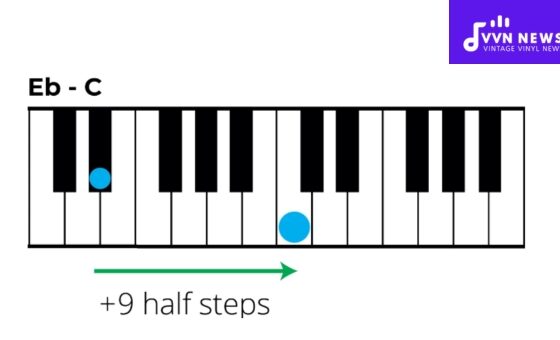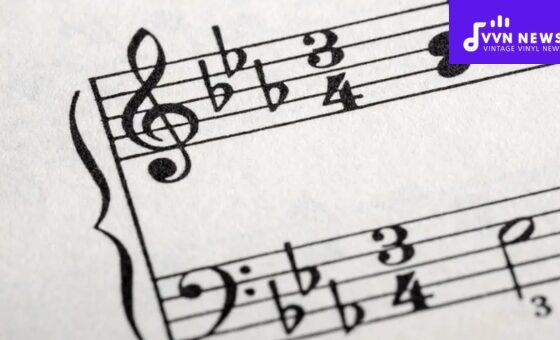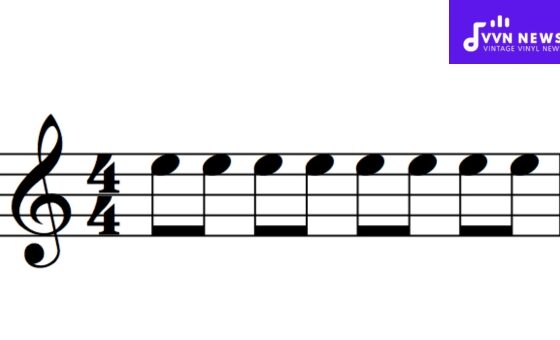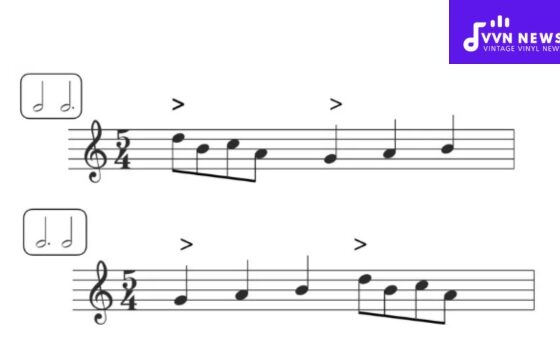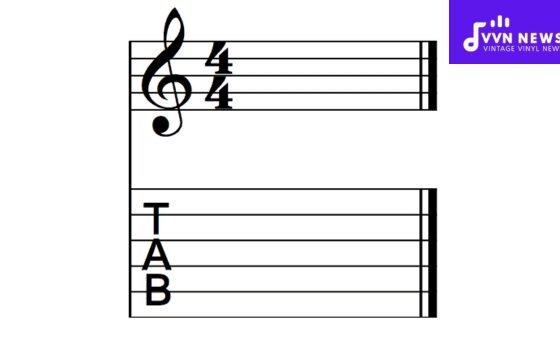When you first start learning to play the flute, it can be overwhelming to find songs that are suitable for beginners.
That’s why I have compiled a list of 20 easy flute songs that are perfect for those who are just starting on their musical journey.
These beginner-friendly pieces will help you familiarize yourself with the instrument, develop your tone and technique, and build your confidence as a flutist.
Whether you’re a young student or an adult learner, these songs will provide a fun and rewarding way to practice and master the flute.
In this article, we will explore a variety of musical genres, from classical to pop, to ensure there’s something for everyone.
Whether you prefer slow ballads or upbeat tunes, there are options to suit your taste. Additionally, each song is carefully selected to offer different challenges and techniques that will help you grow as a flutist.
20 Easy Flute Songs [Beginner-Friendly Pieces To Master]
Playing the flute can be a thrilling and rewarding experience, especially when you have a repertoire of easy songs that allow you to showcase your newfound skills.
In this article, we will explore 20 beginner-friendly flute songs that will help you progress from your first notes to more complex melodies.
Hot Cross Buns
Hot Cross Buns is a traditional nursery rhyme and beginner-friendly song that is perfect for flute players of all ages.
This catchy tune consists of only three notes – D, E, and F – making it an excellent choice for those who are just starting on the flute.
The simplicity of Hot Cross Buns allows beginners to focus on developing their embouchure, breath control, and finger technique.
To play Hot Cross Buns, start by placing your fingers in the correct positions. For the first note, D, press down the first three holes of the flute.
Then, lift your middle finger to play E and lift both your middle and index fingers to play F. Remember to use proper posture and hand position while playing to ensure a clear and beautiful sound.
Mary Had a Little Lamb
Another beloved nursery rhyme that is perfect for beginner flutists is Mary Had a Little Lamb. This well-known tune helps beginners practice their finger coordination as it combines various notes within a short melody.
By mastering this song, you will improve your ability to switch between different notes smoothly.
To play Mary Had a Little Lamb, start by placing your fingers in position for the first note, which is D. After that, lift your middle finger to play E and then place it back down for D again.
To play C, lift your ring finger while keeping the others down. Finally, return to D by lifting all your fingers except the thumb hole.
Twinkle Twinkle Little Star
Twinkle Twinkle Little Star is an iconic children’s song that generations have enjoyed. Flute beginners will find this song particularly helpful in developing their technique as it requires them to hit higher notes such as G and A.
To play Twinkle Twinkle Little Star on the flute, start with D using the same fingering as you did in Hot Cross Buns or Mary Had a Little Lamb.
Transition to E by lifting your middle finger and then move to F# using your index finger. To play G, lift your ring finger, and to reach A, lift both your ring and middle fingers. Lastly, finish the melody with D by releasing all fingers except the thumb hole.
Ode to Joy
Ode to Joy is a beautiful melody from Beethoven’s Ninth Symphony and is an excellent choice for beginner flutists who are ready for a slightly more challenging song. This piece allows you to practice a wider range of notes while still retaining its simplicity.
To play Ode to Joy, start with D as the base note. Then, lift your middle finger for E and both your middle and index fingers for F#.
Next, move down to C#, followed by B, A, G, F#, E, D#, and C#. Remember to keep a steady tempo throughout the piece and focus on producing a smooth sound during each transition.
London Bridge is Falling Down
London Bridge is Falling Down is a classic English nursery rhyme that is perfect for flute beginners. This song provides an opportunity to explore different scales as well as practice rhythm and articulation.
To play London Bridge is Falling Down on the flute, begin with the note D using the same fingering as in previous songs.
Transition to E by lifting your middle finger followed by F# using your index finger. Next, go down to C# followed by B.
To play A#, lift only your left-hand middle finger while keeping others down. Finally, finish with A and G held down simultaneously.
Row, Row, Row Your Boat
Row, Row, Row Your Boat is a timeless nursery rhyme and a great song for beginner flute players. This simple and catchy tune is an excellent way to practice coordination between your breath control and finger technique.
To play Row, Row, Row Your Boat on the flute, start with the note D by pressing down the first three holes of the flute.
Move to E by lifting your middle finger and then return to D. Transition to F# by lifting your index finger and playing it alongside the previous notes. Finally, finish with A by lifting all fingers except the thumb hole.
Remember to maintain a steady tempo while playing this song. Practice playing it in different rhythms, such as straight quarter notes or with a little syncopation to add some variation.
Jingle Bells
Jingle Bells is a festive favorite that beginners can enjoy playing on their flutes. This popular Christmas song is not only fun but also helps develop dexterity in your fingers as you navigate through different notes.
To play Jingle Bells on the flute, start with D using the same fingering as in previous songs.
Transition to E by lifting your middle finger and move on to F# by lifting your index finger as well. Next, go down to A# followed by A (lift all fingers except thumb).
Move back up to D#, E (lift middle), F# (lift index), G#, and finally return to A# before finishing with A.
Pay attention to articulation in this piece as there are staccato notes represented by short silences between them.
Practice maintaining a consistent rhythm throughout the song while ensuring clear transitions between each note.
Also Read: 25 Best Funeral Songs [Paying Tribute With A Heartfelt Melody]
Yankee Doodle
Yankee Doodle is a popular patriotic tune that every beginner flutist should learn how to play. This spirited song introduces additional notes on top of what you have already learned so far.
To play Yankee Doodle on the flute, start with D (fingering remains the same as before).
Then transition to E (lift middle finger), F# (lift index), G (lift ring finger), A, B, C (lifting all fingers except the thumb), and finally reach D by releasing the thumb hole as well.
Focus on keeping a lively tempo and precise transitions between notes. Experiment with dynamics to add variety to your performance, emphasizing certain notes for a more expressive rendition.
Baa, Baa, Black Sheep
Baa, Baa, Black Sheep is a delightful nursery rhyme that is well-suited for beginner flute players. This song will help you refine your finger coordination and explore different notes within a repeated pattern.
To play Baa, Baa, Black Sheep on the flute, start with E by lifting your middle finger. Transition to D (pressing first three holes) and then back to E. Move down to C# followed by D and complete the melody with E.
As you play this song, focus on maintaining a steady tempo and producing clean transitions between each note.
Pay attention to stopping or breathing at appropriate points in the song without interrupting the flow.
Amazing Grace
Amazing Grace is a beautiful hymn that can be played effortlessly on the flute by beginners.
This soulful melody allows you to practice playing slow songs while expressing a range of musical emotions.
To play Amazing Grace on the flute, start with G using standard fingering by pressing down all holes except for your left-hand pinky.
Transition smoothly to A by lifting your ring finger followed by B using your index finger as well. Next, go up to C while lifting all fingers except for your left-hand thumb hole. Finally, finish with G held down again.
When performing Amazing Grace, focus on breathing control and sustaining long notes throughout the piece.
Experiment with dynamics by subtly growing louder or softer at specific moments to convey the depth of emotions in the song.
Three Blind Mice
“Three Blind Mice” is a popular nursery rhyme that can be easily played on the flute.
The song is recognizable with its catchy melody and simple structure, making it an ideal choice for beginners to practice their finger coordination and timing.
To play “Three Blind Mice” on the flute, start with the note D by pressing down the first three holes. Lift your middle finger to play E, and then lift both your middle and index fingers to play F#.
This pattern repeats several times throughout the song. Make sure to maintain a steady tempo and strive for clear and crisp notes.
Old MacDonald Had a Farm
“Old MacDonald Had a Farm” is a beloved children’s song that uses familiar animal sounds. This playful tune allows beginners to practice their finger coordination while exploring different notes in the melody.
To play “Old MacDonald Had a Farm,” begin with D using the same fingering as in previous songs.
Move to E by lifting your middle finger, followed by F# with both your middle and index fingers down.
For G, lift all your fingers except the left-hand thumb hole. Transition to A by lifting only your left-hand ring finger while keeping others down. Conclude with D by releasing all fingers except the thumb hole once again.
Remember to maintain a consistent rhythm as you portray the different animals on Old MacDonald’s farm through this delightful song.
Also Read: 33 Best Snoop Dogg Songs [Relive The Iconic Beats Of This Legend]
Silent Night
As we approach the holiday season, “Silent Night” becomes an excellent choice for beginner flutists looking for simple yet beautiful melodies.
Originating as a Christmas carol, this song provides an opportunity for beginners to explore longer note durations as well as dynamics.
Playing “Silent Night” on the flute begins with D using familiar fingering from previous songs.
Transition smoothly between notes such as C# and B, focusing on producing sustained tones that create a serene atmosphere, much like how this carol is intended.
Practicing proper breath control and playing with expression will elevate your rendition of “Silent Night” to evoke the peacefulness of the holiday season.
Frère Jacques
“Frère Jacques” is a French nursery rhyme that offers a delightful melody for beginner flutists.
This simple yet charming song is perfect for improving finger dexterity and familiarizing oneself with different note sequences.
To play “Frère Jacques,” start with D using the same fingering as in previous songs. Move to E by lifting your middle finger, followed by F# with both your middle and index fingers down.
Transition to G by lifting all fingers except the left-hand thumb hole, then return to F#. Conclude with E by relaxing all fingers except the right-hand pinky finger.
As you play “Frère Jacques,” pay attention to rhythm and timing, striving for smooth transitions between notes while capturing the lightheartedness of this timeless nursery rhyme.
This Old Man
“This Old Man” is a classic children’s counting song that provides an enjoyable challenge for beginner flutists as they navigate various notes and rhythms within its catchy tune.
To play “This Old Man,” begin with D using familiar fingering from previous songs.
Transition to E by lifting your middle finger, followed by F# using both your middle and index fingers. Next, move on to G by lifting all fingers except the left-hand thumb hole.
Play A# by lifting just your left-hand ring finger while keeping others down, followed by A with all fingers lifted except the right-hand pinky finger. Conclude with G once again.
Focus on maintaining a consistent tempo throughout “This Old Man” while ensuring each note is clear and distinct.
Also Read: 30 Best Father And Daughter Dance Songs [Memorable Moments]
Auld Lang Syne
Auld Lang Syne is a timeless Scottish folk song commonly sung at the stroke of midnight on New Year’s Eve, signifying a farewell to the old year and a welcoming of the new.
This beautiful tune has become a global tradition, making it an essential piece for flute players to learn.
The song features a simple yet melodic melody that provides ample opportunity for beginners to practice their note phrasing and breath control.
To play Auld Lang Syne on the flute, begin by setting your fingers in position for the first note, which is D. Lift your middle finger to play E and return to D.
Move down further to C# and then B. Lift your ring finger followed by your pinky for A and G respectively. Finally, close with F#, E, and D with smooth transitions between each note throughout the song.
Scarborough Fair
Scarborough Fair is a traditional English ballad that dates back to medieval times. Its haunting melody and sentimental lyrics have made it an iconic piece of music that stands the test of time.
As a beginner flutist, playing at Scarborough Fair offers an excellent opportunity to practice dynamics, breath control, and tone quality.
To play Scarborough Fair on the flute, start with low D as the base note using the same fingering technique as before. Move on to lift your middle finger for E followed by F#.
Transition down to C# before releasing it with B as you reach upward with both ring fingers raised for A and G#. Now close with F#, E#, D#, C#, and B before ending gracefully on high A.
Greensleeves
Greensleeves is another popular English folk song that has been loved for centuries.
Its melancholic melody tells a tale of unrequited love and has been adapted into countless variations throughout history.
By learning Greensleeves on the flute, beginner musicians can focus on developing their expressiveness and ability to interpret a piece of music.
To play Greensleeves, start with low D as the first note and then lift your middle finger to reach E.
Return to D before moving down to C#. Then, proceed to B, A, G#, F#, G#, A, B before closing the melody with a high C#.
When the Saints Go Marching In
When the Saints Go Marching In is a vibrant and uplifting gospel hymn that has become a staple in jazz and popular music.
It is an excellent choice for beginner flutists who want to explore different musical styles and rhythms.
This song allows flutists to practice playing with energy and enthusiasm while maintaining a steady tempo.
To play When the Saints Go Marching In on the flute, start with low D as the opening note. Transition to E by lifting your middle finger before returning to D.
Continue down to C# followed by B, A#, A, G#, A sharp again, B, high C#, before ending gracefully on high D.
Hush Little Baby
Hush Little Baby is a gentle lullaby that has been sung for generations to soothe infants and toddlers.
While it may seem simple compared to other songs on this list, mastering Hush Little Baby on the flute presents an opportunity for beginner flutists to focus on breath control dynamics and playing delicately.
To play Hush Little Baby, begin with low D as the starting note using the same finger position as before.
Transition smoothly from E down to B while maintaining a soft and gentle tone throughout.
Let your breath carry you through each note gracefully as you create a soothing rendition of this well-loved lullaby.
By exploring these 20 easy flute songs, beginner flutists can gradually build their skills while enjoying a diverse range of musical genres.
Each song offers its unique challenges and techniques that contribute towards mastery of the flute.
Also Read: 27 Best Bass Songs [Experience The Deepest Grooves Of Music]
FAQs About Flute Songs
Can I learn to play the flute as a beginner?
Absolutely! The flute is a great instrument for beginners to learn. With practice and dedication, anyone can master the flute and play beautiful music.
Are these easy songs suitable for children learning the flute?
Yes, the songs on this list are beginner-friendly and are suitable for children who are starting their flute journey. These songs will help them develop their skills while having fun.
How often should I practice these songs as a beginner?
Consistency is key when learning any instrument. Aim to practice these songs for at least 15-20 minutes every day to build muscle memory and improve your playing ability.
Can I use these songs for recitals or performances?
While these songs may be relatively simple, they can still make great additions to recitals or performances, especially for beginner flutists. You can always find creative ways to make them shine through dynamics and interpretation.
Where can I find sheet music or tutorials for these songs?
Sheet music and tutorials for these easy flute songs can be found online on various websites that specialize in providing resources for flutists of all levels, such as music stores, educational websites, or YouTube channels dedicated to teaching flute playing techniques.
Conclusion
These 20 easy flute songs provide a fantastic foundation for beginners to master the flute. Each song offers unique challenges and opportunities to develop important skills such as finger coordination, breath control, and tone production.
From traditional nursery rhymes like “Hot Cross Buns” and “Mary Had a Little Lamb” to iconic melodies like “Twinkle Twinkle Little Star” and “Ode to Joy,” aspiring flutists will have a diverse repertoire of songs to practice and enjoy. So grab your flute and start playing these beginner-friendly pieces today!




